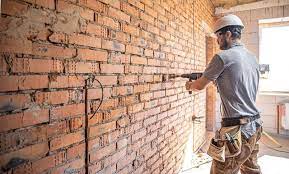Customizing Your Industrial Paint Booth: Options for Insulated or Single-skin Construction
Asenqua Tech is reader-supported. When you buy through links on our site, we may earn an affiliate commission.
Industrial paint booths play a crucial role in various manufacturing processes, providing controlled environments for painting, finishing, and curing applications. When investing in a paint spray booth or industrial paint booth, one important consideration is the construction type. Whether opting for insulated or single-skin construction, each option offers unique benefits and considerations that can impact performance, efficiency, and cost-effectiveness. In this comprehensive guide, we’ll explore the differences between insulated and single-skin industrial paint booths, helping you make an informed decision when customizing your paint booth to meet your specific needs.
Insulated Construction: Enhancing Efficiency and Climate Control
Insulated construction involves the use of materials designed to provide thermal insulation and improve energy efficiency within the paint booth. These booths feature double-wall panels with a layer of insulation sandwiched between inner and outer skins, creating a barrier against heat transfer and external environmental factors. The insulation helps maintain consistent temperatures inside the booth, reducing the workload on heating and cooling systems and ensuring optimal conditions for painting and curing processes. Additionally, insulated construction offers better climate control, allowing operators to achieve and maintain desired temperature and humidity levels regardless of external conditions.
Single-Skin Construction: Cost-Effective and Versatile
On the other hand, single-skin construction consists of a single layer of material without additional insulation. While lacking the thermal efficiency of insulated booths, single-skin paint booths offer several advantages, including cost-effectiveness and versatility. These booths are typically more affordable to purchase and install, making them an attractive option for businesses with budget constraints or those seeking a more economical solution. Additionally, single-skin booths can be customized and adapted to accommodate various applications and space requirements, providing flexibility and scalability for different manufacturing environments.
Choosing the Right Construction Type for Your Needs
When deciding between insulated and single-skin construction for your industrial paint booth, it’s essential to consider your specific requirements and priorities. If energy efficiency, climate control, and temperature stability are critical factors in your painting processes, insulated construction may be the preferred choice. Insulated booths offer superior thermal performance and can help reduce energy costs over time, making them ideal for applications that demand precise temperature control and consistent finishes.
Conversely, if cost savings and flexibility are your primary concerns, single-skin construction may be a more suitable option. Single-skin booths provide a practical and cost-effective solution for businesses looking to optimize their painting operations without compromising on quality or performance. With customizable features and configurations, single-skin booths offer versatility and adaptability to meet evolving production needs and space constraints.
Conclusion
In conclusion, the choice between insulated and single-skin construction for your industrial paint booth depends on a variety of factors, including budget, performance requirements, and operational preferences. Insulated booths offer superior thermal efficiency and climate control, making them ideal for applications that demand precise temperature regulation and energy savings. On the other hand, single-skin booths provide cost-effective solutions with greater flexibility and customization options, making them suitable for a wide range of manufacturing environments. By understanding the differences between these construction types and evaluating your specific needs, you can customize your industrial paint booth to optimize efficiency, productivity, and performance.





